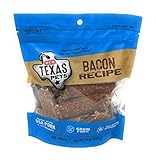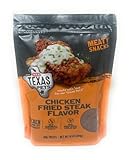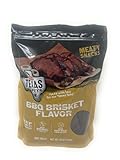If your dog could talk, the first words out of his mouth after a whiff of hickory-smoked heaven would probably be “Texas Hold ’Em, please.” That unmistakable campfire aroma drifting from a fresh batch of all-natural smoked treats triggers tail-wag reflexes faster than you can say “all-in.” But behind the drool-inducing scent lies a bigger story: how artisanal smokehouses are revolutionizing canine snacking with single-protein recipes, low-and-slow cooking methods, and transparent sourcing that would make a pit-master proud.
Before you ante up for the next bag, it pays to understand what separates a premium smoked treat from backyard briquettes dressed up in cute packaging. In this guide we’ll shuffle through the science of smoke, the nutritional nuances of wood-fired proteins, and the labeling loopholes that can turn a “natural” chew into a chemical cocktail. Whether you’re rewarding a puppy-in-training or keeping a senior dog’s jaws strong, mastering these details guarantees every hand you deal is a winner for both taste buds and well-being.
Top 10 Texas Hold Em Dog Treats
Detailed Product Reviews
1. Cloud Star Wag More Bark Less Jerky Grain Free Dog Treats, Texas BBQ Beef, 10 oz. Pouch

Overview: Cloud Star’s Wag More Bark Less Texas BBQ Beef Jerky turns treat time into a Lone-Star cookout. Each 10 oz pouch is stuffed with soft strips that smell like pit-smoke and break apart without crumbs.
What Makes It Stand Out: Real smoked beef headlines the ingredient list, followed by a BBQ spice choir of tomato, vinegar, lemon and turmeric—no mystery “flavor” dust. Grain-free, 50-calorie strips suit sensitive stomachs and training pockets alike.
Value for Money: At $1.44 per oz you’re paying jerky prices, but the meat is U.S.-sourced and the bag reseals to stay pliable for weeks; cheaper biscuits can’t match the aroma or protein (24 % min).
Strengths and Weaknesses:
Pros: USA oven-baked, limited clean label, irresistible scent, easy to portion.
Cons: Strong BBQ smell lingers on fingers, strips can stick together in humid climates, bag is only ⅔ full by weight.
Bottom Line: If your dog dreams of brisket, this is the cleanest way to indulge. Break out the jerky and prepare for instant recall.
2. Pets First Texas Longhorns Football Treat Dispensing Toy – Interactive Fun with Natural Rubber, for Dogs and Cats (TX-3622)

Overview: Pets First shrinks NCAA game-day hype into a 4.75-inch rubber football that doubles as a treat puzzle. Six Texas Longhorn logos wrap a hollow core that dribbles kibble when your pup tackles, nudges or paws the toy.
What Makes It Stand Out: Licensed team graphics in true burnt-orange let dogs rep the Horns while they work for dinner; the natural rubber is soft enough for gums yet tough enough for power chewers up to 60 lb.
Value for Money: Fourteen dollars buys an officially licensed dispenser that outlasts most plush stadium giveaways and slows gulpers to prevent bloat—cheaper than a slow-feed bowl.
Strengths and Weaknesses:
Pros: Fits most kibble & jerky bits, dishwasher-safe, floats for pool play, mental enrichment for cats too.
Cons: 0.75-inch holes frustrate small treats; heavy droppers may scuff hardwood; logo paint fades after months of slobber.
Bottom Line: Great for Longhorns fans who want a multitasking toy. Fill it, fling it, and watch your M-V-P (Most Valuable Pup) chase a touchdown.
3. H‑E‑B Texas Pets Turkey Meatballs Dog Treats 12oz – 1 Bag

Overview: H-E-B’s Turkey Meatballs are golf-ball-sized, grain-free morsels packed in a resealable 12 oz pouch. The ingredient list is short—turkey, pea flour, sweet potato—baked until the outside is firm but the center stays chewy.
What Makes It Stand Out: High-protein (28 %) spheres can be served whole for big dogs or halved for training; the reseal zipper keeps them from drying out like conventional biscuits.
Value for Money: Just under $19 for 12 oz pushes the upper limit for mid-tier treats, but you’re paying for single-source turkey and Texas-store quality control—no China ingredients.
Strengths and Weaknesses:
Pros: Strong turkey aroma drives dogs wild, soft enough for seniors, grain-free, large pieces curb over-feeding.
Cons: Price per ounce rivals premium freeze-dried; balls crumble if stepped on; pouch can arrive with loose “meatball dust” at bottom.
Bottom Line: A tasty, protein-dense reward for owners who shop local Texas brands. Worth the splurge if your hound loves novelty shapes.
4. The Memory Company | Licensed NCAA Treats for Team Fans Only Ceramic Pet Treat Canister,Texas A&M University

Overview: The Memory Company’s ceramic canister lets Aggie pets store biscuits in proper 12th-Man style. A domed lid with silicone gasket bears a crisp Texas A&M logo under a clear glaze that wipes clean of nose prints.
What Makes It Stand Out: Unlike tin boxes, ceramic keeps treats cool and odor-contained; the wide 6-inch mouth fits a scoop or pudgy mastiff muzzle. It doubles as countertop décor on game day.
Value for Money: Twenty dollars for an empty jar feels steep, but officially licensed NCAA kitchenware usually starts at $25—here you’re saving while showing team spirit.
Strengths and Weaknesses:
Pros: Heavy base prevents tipping, gasket keeps food fresh, microwave & dishwasher safe, classy enough for human cookies.
Cons: Ceramic chips if dropped; no included treats; lid can stick when grease builds up.
Bottom Line: Buy it for the fandom, not the contents. A worthy splurge for A&M households that want pet gear to match the man cave.
5. H‑E‑B Texas Pets Bacon Recipe Dog Treats 12oz – 1 Bag

Overview: H-E-B’s Bacon Recipe Dog Treats channel Saturday-morning skillet vibes into crunchy, grain-free strips. The 12 oz resealable bag smells legitimately smoky the moment you tear it open.
What Makes It Stand Out: Real bacon is the first ingredient, backed by pea flour and sweet potato for a crunchy-yet-easily snapped texture suitable for training or topping. No corn, wheat or soy to trigger allergies.
Value for Money: Twenty bucks for 12 oz nudges premium territory, but comparable bacon-first treats list at $22-$24 elsewhere, making this a hometown bargain for Texans.
Strengths and Weaknesses:
Pros: Intense bacon aroma equals instant focus, grain-free, break without crumbling, reseal keeps strips crisp.
Cons: Grease can settle in bag folds; color varies batch-to-batch; pricey if you have multiple large dogs.
Bottom Line: Perfect high-value snack for recall training or post-bath bribes. Grab them while shopping local—your dog will swear you’re frying bacon just for him.
6. Texas Pet Company Chicken Jerky Sticks Crunchy Dog Treats Made in The USA Single Ingredient for Small to Large Dogs 75 Count 8oz

Overview: Texas Pet Company’s 75-count Chicken Jerky Sticks promise a single-ingredient, USA-made crunch for dogs of every size. Each 7-inch stick is air-dried, grain-free, and clocks in at only nine calories, making it a guilt-free reward.
What Makes It Stand Out: The brand’s “human-grade” sourcing and zero-additive recipe stand in stark contrast to most shelf-stable treats. The resealable jar keeps 75 paper-thin sticks fresh without added preservatives, and the dental ridges help scrape plaque while dogs chew.
Value for Money: At $79.98 per pound, these are among the priciest treats on the market; you’re paying almost a dollar per stick. If absolute ingredient purity tops your priority list, the cost is justifiable—otherwise, budget-minded owners will wince.
Strengths and Weaknesses: Pros: truly single ingredient, low calorie, excellent for allergy-prone or overweight dogs, made in Texas with transparent sourcing. Cons: exorbitant price, sticks shatter easily into sharp shards that can gag small dogs, and the 8-ounce jar is half air once the fragile pieces crumble.
Bottom Line: A near-pharmaceutical-grade treat for hypersensitive pups or strict elimination diets, but the sky-high cost and fragility relegate it to occasional splurge status rather than daily training fodder.
7. H‑E‑B Texas Pets Chicken Fried Steak Flavor Meaty Snacks Dog Treats 10oz – 1 Bag

Overview: H-E-B’s Chicken Fried Steak Flavor Meaty Snacks deliver down-home Texas taste in a soft, chewy strip. Chicken leads the ingredient list, followed by liver and natural smoke flavor, all packed into a 10-ounce resealable bag.
What Makes It Stand Out: The treat mimics comfort-food aroma without adding wheat, corn, or soy—common fillers that trigger allergies. The soft texture makes it easy to tear into training-sized bits, and the smoky scent rivets even picky dogs.
Value for Money: At roughly $1.50 per ounce, it sits squarely in the mid-range bracket—cheaper than boutique jerky yet pricier than biscuit bulk boxes. Given the first-rate protein and regional availability, the tag feels fair.
Strengths and Weaknesses: Pros: high palatability, allergen-friendly binder, made in Texas, resealable bag prevents staleness. Cons: soft strips can smear grease on hands and upholstery, contains added salt and caramel color that strict purists may dislike, and calorie count (28 kcal/strip) climbs quickly when doling “just one more.”
Bottom Line: A wallet-friendly, allergy-aware pick for everyday rewarding or high-value training treats—just keep a napkin handy and mind the portion size.
8. H‑E‑B Texas Pets BBQ Brisket Flavor Meaty Snacks Dog Treats 10oz – 1 Bag

Overview: H-E-B’s BBQ Brisket Flavor Meaty Snaps channel Lone Star barbecue into dog-approved form. Beef headlines the recipe, supported by liver and natural hickory smoke, delivering a 10-ounce bag of soft, break-apart strips.
What Makes It Stand Out: By spotlighting beef instead of the usual chicken, the snack offers novel-protein variety for轮换-sensitive stomachs. The absence of wheat, corn, or soy keeps allergen risks low, while the hickory aroma appeals to scent-driven pups.
Value for Money: At $1.50 per ounce, it mirrors its chicken cousin—neither budget blowout nor bargain bin. Regionally produced and stocked, it undercuts mail-order artisan brands once shipping is tallied.
Strengths and Weaknesses: Pros: red-meat diversity, soft texture ideal for seniors or tiny jaws, resealable pouch, Texas-made. Cons: stronger smoky odor lingers on fingers; modest fat content (9% min.) may upset ultra-sensitive tummies; color additives stain light-colored carpets if dropped and forgotten.
Bottom Line: A solid rotational treat for dogs bored with poultry—just break it small and store it away from white furniture.
9. H‑E‑B Texas Pets Chicken & Waffle Flavor Meaty Snacks Dog Treats 10oz – 1 Bag

Overview: H-E-B’s Chicken & Waffle Flavor Meaty Snacks marry sweet breakfast nostalgia with canine nutrition. Chicken remains the first ingredient, rounded out by maple flavoring and a touch of molasses in a 10-ounce pouch.
What Makes It Stand Out: The playful flavor combo stands out in a sea of plain poultry strips, yet the brand still omits wheat, corn, and soy. The soft texture and sweet scent turn heads at the dog park, making it an ace high-value reward.
Value for Money: Again priced at about $1.50 per ounce, you pay slightly more than plain biscuits but far less than gourmet jerkies—reasonable for a novelty formula with respectable protein (18% min.).
Strengths and Weaknesses: Pros: irresistible sweet-smoke aroma, easy to tear, allergy-friendly grains, regionally crafted. Cons: sugar sources (molasses, maple) bump calories to 30 per strip—watch waistlines; scent can attract unwanted pantry pests if not sealed tightly; maple dye may discolor light fur around mouths.
Bottom Line: A fun, aromatic training booster for special occasions, but reserve it for days when extra motivation—not dietary purity—is the goal.
10. Texas Pet Company Chicken Jerky Crunchy Bites, Made in The USA Dog Treats, Natural 2-Ingredients, 14.5 Ounces

Overview: Texas Pet Company’s Chicken Jerky Crunchy Bites deliver cube-shaped, 0.5-inch nuggets of dehydrated U.S. chicken breast. The two-ingredient label lists only meat and a dash of natural glycerin, then nothing else.
What Makes It Stand Out: The firm, crunchy texture actively scrubs teeth unlike soft alternatives, while the uniform cubes make portion control brainless—no guesswork, no crumbling sticks. Local sourcing and small-batch dehydration keep quality tight.
Value for Money: Price was unavailable at review time, but if it parallels the brand’s jerky sticks, expect a premium tier. Absent a price tag, we weigh hypothetical value against dental benefits and clean recipe.
Strengths and Weaknesses: Pros: hard crunch aids oral hygiene, tiny cubes suit small breeds yet can be fed in multiples to big dogs, single protein for elimination diets, no stinky residue. Cons: must be used within 30 days once opened—wasteful for single-dog households; hardness could fracture weak teeth on aggressive chewers; availability and cost remain question marks.
Bottom Line: Assuming the price lands under $25 for 14.5 oz, these are an excellent dental-friendly topper. Otherwise, they’re a niche splurge for owners prioritizing teeth-cleaning kibble toppers over budget.
Why Smoked Treats Trigger Canine Cravings
Dogs experience flavor through a combination of olfactory receptors roughly 40 times more powerful than ours. When hardwood smoke adheres to amino acids on the surface of meat, it creates Maillard compounds that supercharge scent molecules. Translation: the richer the smoke ring, the faster your pup’s brain lights up like a slot-machine jackpot. Add to that the primal satisfaction of tearing into a jerky-like strip, and you’ve got a multisensory enrichment tool disguised as a snack.
Hardwood vs. Softwood: The Smoke Spectrum
Not all woods are created equal. Hardwoods—think hickory, oak, and mesquite—burn hot and clean, producing thin blue smoke packed with sweet phenolics. Softwoods (pine, fir) ooze resin that leaves creosote deposits: bitter, oily, and potentially irritating to canine digestive tracts. Reputable smokehouses stick to hardwood only; if the label doesn’t specify, email the company. No response? Fold that hand and move on.
Cold Smoke vs. Hot Smoke: Temperature Tells the Tale
Cold smoking (70–90 °F) infuses flavor without fully cooking the protein, ideal for post-production dehydration that keeps textures chewy. Hot smoking (165–185 °F) partially cooks the meat, locking in juices but shortening shelf life unless additional preservatives are added. For treats, a hybrid approach—hot smoke to food-safe internal temps, then gentle air-dry—delivers both safety and chew longevity.
Reading Between the Labels: “All-Natural” Defined
The AAFCO provides zero legal definition of “natural,” leaving marketers free to ante up with vague claims. Your ace in the hole: ingredient lists shorter than a country song chorus. Look for single proteins, hardwood smoke as the only flavoring, and natural antioxidants (rosemary extract, mixed tocopherols) instead of BHA, BHT, or ethoxyquin.
Single-Protein Power: Why Limited Ingredient Matters
Chicken, beef, wild boar—pick one per bag. Single-protein smoked treats eliminate the guessing game when your vet utters the dreaded words “elimination diet.” They also reduce cross-contamination risk for households battling protein allergies. Bonus: you’ll know exactly what’s in that crumbly residue on your carpet when vacuuming day arrives.
Wood Pairings That Elevate Flavor Profiles
Applewood lends a sweet, fruity note that balances gamey proteins like venison. Post-oak, the darling of Texas barbecue pits, layers mellow earthiness onto beef. Cherry adds a rosy tint and mild tartness that amplifies pork. Think of pairings the way pitmasters match wood to meat; your pup’s palate may be less discerning, but chemical synergy still impacts palatability.
Moisture Content & Chew Time: Finding the Sweet Spot
A treat that’s too dry (<10 % moisture) shatters like week-old toast—fun crunch, zero dental benefit. Too moist (>20 %) and you’re basically handing your dog a bacteria magnet. Target 12–15 % moisture for a resilient chew that scrapes plaque without turning into a microbial petri dish. Packaging should list water activity (aw) values; anything under 0.70 resists mold.
Sodium Levels: Smoke’s Sneaky Sidekick
Smoke concentrates flavor, but it can also concentrate salt if the brine isn’t controlled. Excess sodium triggers polydipsia (excessive drinking) and can strain senior kidneys. Look for guaranteed analysis showing ≤1 % sodium on a dry-matter basis. If the company omits sodium entirely, consider that a red flag bigger than a Lone-Star belt buckle.
Preservative-Free Preservation Techniques
Smoke itself is an antioxidant, but after the cooker shuts down, rancidity lurks. Nitrogen-flush packaging, oxygen absorbers, and vacuum-sealed bricks extend shelf life without synthetic preservatives. Transparent brands stamp both a production date and a “best by” window—typically 12–14 months for unopened bags. Once cracked, store in a freezer-grade zip bag and finish within 30 days.
Calorie Density: Don’t Let Treats Tip the Scale
Smoking removes water, shrinking portion size while concentrating calories. A strip that looks modest can pack 70–90 kcal. For a 25 lb dog needing 600 kcal daily, three strips equal 35 % of daily intake. Use the 10 % rule: all treats combined should stay below 10 % of total calories. Invest in a kitchen scale; your pup’s waistline will thank you.
Dental Health Benefits Beyond the Crunch
Mechanical abrasion is only half the story. Smoke-derived phenols exhibit mild antimicrobial properties, reducing oral streptococci counts. Combine that with collagen-rich cuts (think beef esophagus) and you deliver a flossing action that reaches the gumline. Still, smoked treats are adjuncts, not substitutes, for brushing and professional cleanings.
Sourcing Transparency: From Pasture to Pit
Traceability beats glossy marketing every time. Request a letter of guarantee (LOG) from the manufacturer verifying farm origin, hormone/antibiotic protocols, and smokehouse audit scores. Farms within a day’s drive of the smokehouse minimize transport stress and carbon footprint. If they balk at providing an LOG, walk—don’t run—to another brand.
Allergen Cross-Contact: The Shared Smoker Problem
Even if the recipe is pristine, a communal smoker can harbor residue from previous batches. Ask about allergen-control schedules: heat sanitization cycles between proteins, dedicated racks for fish, and swab testing for milk proteins. Premium facilities operate like Michelin-star kitchens, documenting every clean-down.
Shipping & Storage Tips to Maintain Freshness
Summer heat waves can turn a vacuum-sealed bag into a rancid sauna. Choose retailers that ship with insulated liners and gel packs; the added cost beats a vet bill for gastroenteritis. Upon arrival, sniff the product—any sour, plastic, or turpentine note signals creosote contamination. When in doubt, snap a photo and email customer service; reputable brands refund or replace, no questions asked.
DIY Backyard Smoking: Safety First
Feeling adventurous? Cold-smoke raw proteins only if you can maintain sub-40 °F for the entire duration—impractical without commercial equipment. Hot-smoke to an internal temp of 165 °F for poultry, 145 °F for red meats, then dehydrate at 160 °F until the strip cracks but doesn’t break. Use a dedicated meat slicer for uniform thickness (¼ inch) and skip marinades containing onion or garlic powder. Post-smoke freeze in daily portions; thaw as needed.
Introducing Smoked Treats to Sensitive Stomachs
No matter how artisanal, novel proteins and concentrated smoke compounds can trigger GI revolt. Start with a thumbnail-sized piece, then monitor stools for 48 hours. Look for color change, mucus, or urgency. If all signs remain normal, gradually increase to the full calorie allowance over seven days. Keep a “treat diary” so your vet can cross-reference should issues arise later.
Frequently Asked Questions
1. Are smoked dog treats safe for puppies?
Yes, provided they’re sized appropriately and sodium stays under 1 %. Introduce after 12 weeks when permanent teeth begin erupting.
2. Can smoked bones splinter like cooked bones?
True smoked bones are raw, then low-smoked and dehydrated; they’re less likely to splinter than oven-baked bones. Supervise always and discard when they’re small enough to swallow.
3. How can I tell if a treat is too high in fat?
Request a dry-matter fat analysis; anything above 20 % can trigger pancreatitis in sensitive breeds like Miniature Schnauzers.
4. Do smoked treats expire if vacuum-sealed?
Vacuum seal slows oxidation but doesn’t stop it. Respect the printed “best by” date and refrigerate after opening.
5. Are wood-smoke flavorings the same as real hardwood smoking?
Liquid smoke can replicate flavor but lacks the antimicrobial edge and mouthfeel of genuine hardwood. Check labels for “naturally smoked” versus “smoke flavor.”
6. Can I give smoked treats to a dog with kidney disease?
Consult your vet first. Restricted phosphorus and sodium are critical; some brands offer low-phos smoked turkey breast—use sparingly.
7. Why do some treats smell like campfire and others like chemicals?
Creosote buildup from poor ventilation creates a sharp, tar-like odor. A clean campfire scent signals proper airflow and high-quality wood.
8. Is it normal for my dog’s poop to darken after eating smoked treats?
Minor darkening is harmless; smoke pigments pass through. Black, tarry stools warrant a vet check for upper-GI bleeding.
9. How do I balance smoked treats with training rewards?
Cut strips into pea-sized pieces, freeze the extras, and dish out single calories during clicker sessions to avoid overfeeding.
10. Can cats share dog smoked treats?
Feline taurine requirements differ. Occasional shared protein is fine, but cats need feline-formulated treats for daily use.